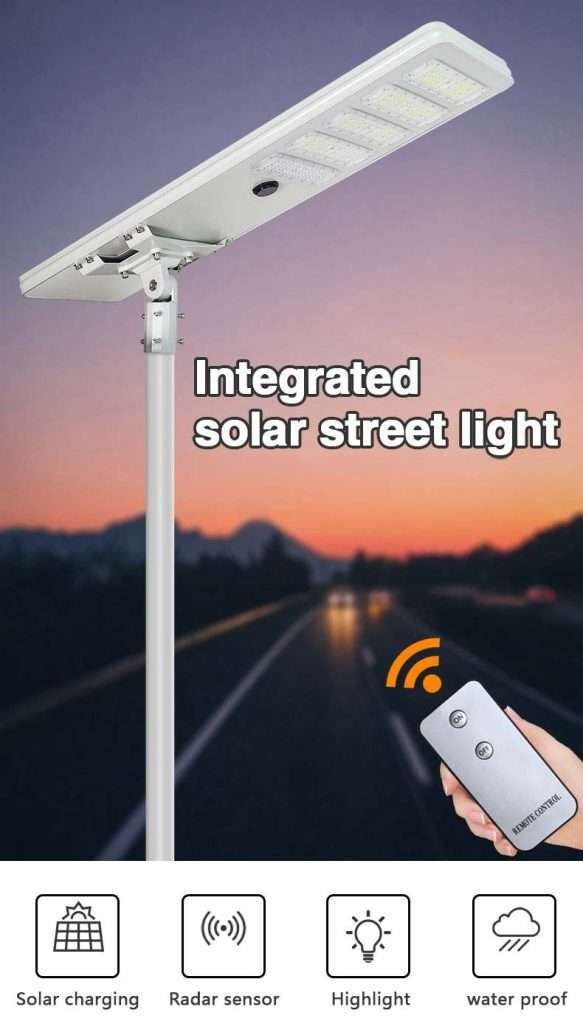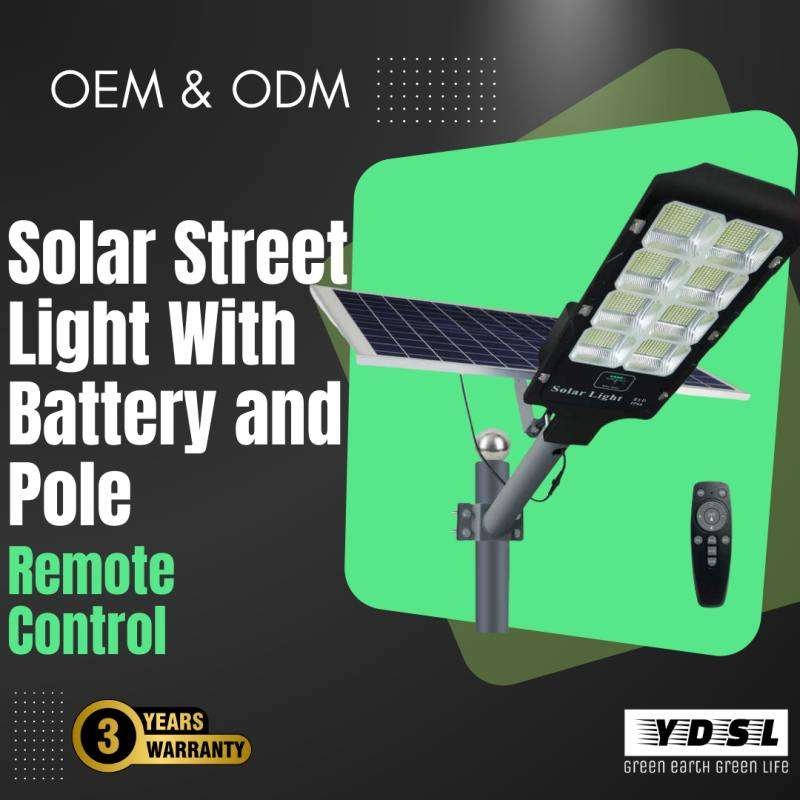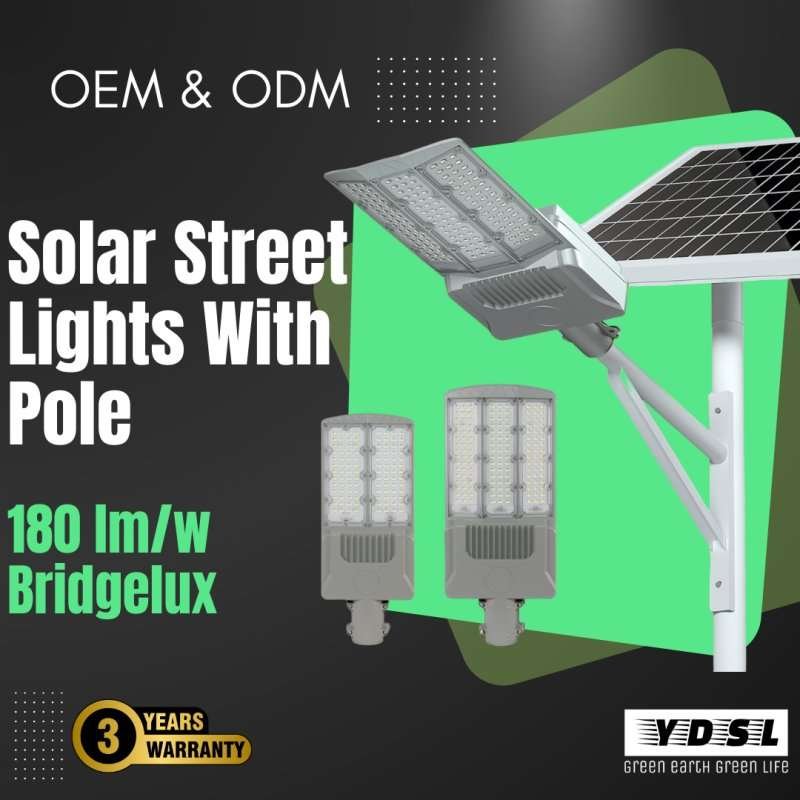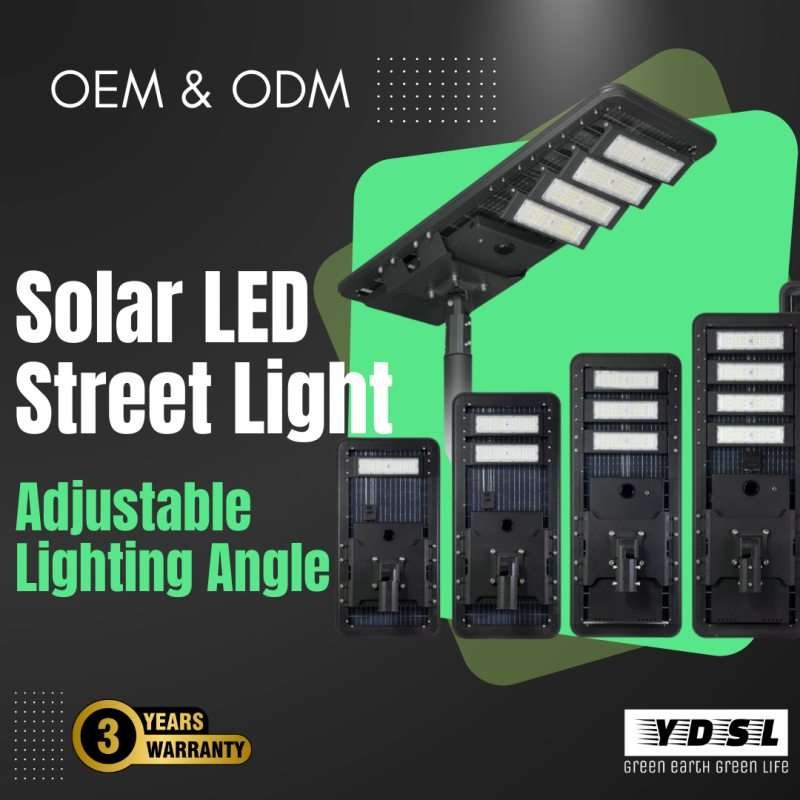The Solar Street Lighting Working System Principles
Quick Browsing
ToggleSolar street lighting has become a vital solution for sustainable urban development, providing energy-efficient lighting solutions that reduce carbon footprints and utility costs. YDSL’s advanced solar street lighting systems offer intelligent controls that can be managed via mobile devices and computer networks. In this article, we will explore the working principles of solar street lighting and the smart features of YDSL products, including their components and materials.
Working Principles of Solar Street Lighting
Solar street lighting systems operate by harnessing sunlight to generate electricity during the day, which is then stored in batteries for use at night. Here’s a step-by-step overview of the process:
- Solar Panels: During daylight hours, solar panels absorb sunlight and convert it into electrical energy. YDSL offers both monocrystalline and polycrystalline solar panels, ensuring efficient energy capture regardless of the installation environment.
- Battery Storage: The generated electricity is stored in batteries. YDSL recommends different types of lithium batteries based on regional requirements, such as LiFePO4 batteries and 18650 batteries.
- LED Light Source: At dusk, the stored energy powers high-quality LED chips, providing bright and reliable illumination. YDSL uses premium brands like Bridgelux and Epistar for their long lifespan and excellent performance.
- Smart Controls: YDSL solar street lights feature intelligent control systems that allow for remote monitoring and management via mobile apps or computer systems, ensuring optimal performance and convenience.
Intelligent Features of YDSL Solar Products
YDSL’s LED solar street lighting systems are equipped with advanced features that enhance their functionality and ease of use:
- Mobile Control: Manage individual street lights or entire networks through a user-friendly mobile app, allowing for real-time adjustments and monitoring.
- Computer-Based Group Control: Centralized control systems enable the management of multiple lights from a computer, streamlining operations for municipal and large-scale installations.
- Automated Operation: Intelligent sensors and timers ensure the lights operate efficiently, switching on at dusk and off at dawn automatically.
Components of YDSL Solar Street Lights
Lamp Body:
- Materials: The best solar street lighting body is constructed from high-quality materials such as die-cast aluminum or the latest ABS aerospace material.
- Benefits: Die-cast aluminum provides excellent heat dissipation and durability, making it resistant to weather and physical damage. ABS aerospace material offers lightweight strength and superior weather resistance, ensuring long-lasting performance in various environmental conditions.
Battery Types:
- LiFePO4 Batteries:
- Features: Known for their long cycle life and stability, these batteries offer a high level of safety and reliability.
- Benefits: Ideal for regions with extreme temperatures, LiFePO4 batteries ensure consistent performance and a longer lifespan.
- 18650 Li-ion Batteries:
- Features: Compact and efficient, these batteries are widely used in various applications due to their high energy density.
- Benefits: Suitable for areas where space and weight are considerations, 18650 batteries provide reliable power in a smaller form factor.
- LiFePO4 Batteries:
Solar Panels:
- Types: Available in monocrystalline and polycrystalline options.
- Benefits:
- Monocrystalline Panels: Known for higher efficiency and longer lifespan, making them suitable for areas with limited sunlight exposure.
- Polycrystalline Panels: Cost-effective and efficient, ideal for regions with abundant sunlight, offering a balance between performance and cost.
Solar Poles and Arms:
- Professional Recommendations: YDSL provides expert advice on selecting the appropriate poles and arms for optimal solar street light installation and performance.
- Benefits: Ensures that the solar street light with pole and battery is securely mounted and positioned for maximum efficiency and coverage, tailored to the specific requirements of the installation site.
LED Chips:
- Brands: Only high-quality LED chips from reputable brands like Bridgelux and Epistar are used.
- Benefits:
- Longevity: These premium LED chips offer a long lifespan, reducing the need for frequent replacements and maintenance.
- Superior Illumination: Provides bright and consistent lighting, ensuring excellent visibility and safety for public spaces.
Human, Radar, and PIR Sensors:
- Human Sensors: Detects the presence of people, optimizing light output for areas with high pedestrian traffic.
- Radar Sensors: Provides wide-area detection, ideal for monitoring larger spaces and ensuring lights are activated when needed.
- PIR Sensors: (Passive Infrared Sensors) Detects heat signatures from people and animals, triggering the lights when movement is detected.
- Benefits:
- Energy Efficiency: Sensors help conserve energy by activating lights only when movement is detected.
- Enhanced Security: Improves security by ensuring areas are well-lit when occupied.
- Extended Battery Life: By reducing unnecessary light operation, sensors contribute to longer battery life and overall system efficiency.
Advantages and Disadvantages of Solar Street Lighting Systems
Advantages of Solar Street Lighting Systems
Energy Efficiency
- Pole solar street light systems harness sunlight to generate electricity, which is stored in batteries for use at night. This process eliminates the need for traditional electricity, significantly reducing energy consumption and utility costs.
- Benefit: By relying on renewable solar energy, these systems contribute to a reduction in greenhouse gas emissions and help conserve natural resources, making them an environmentally friendly choice.
Low Maintenance and Operating Costs
- Once installed, solar street lights require minimal maintenance compared to conventional street lighting systems. The absence of electrical wiring reduces the risk of electrical faults and the need for frequent repairs.
- Benefit: The use of high-quality components such as durable LED chips and long-lasting lithium batteries ensures that the system remains operational for extended periods without significant maintenance expenses. This leads to long-term cost savings for municipalities and businesses.
Independence from the Power Grid
- Solar street lights operate independently of the power grid, making them an ideal solution for remote or off-grid locations where access to electricity is limited or nonexistent.
- Benefit: This independence ensures that the lights remain functional even during power outages, enhancing the reliability and resilience of public lighting infrastructure. It also simplifies the installation process, as there is no need to lay extensive electrical cables.
Disadvantages of Solar Street Lighting Systems
Initial High Capital Investment
- The initial cost of purchasing and installing solar street lighting systems can be higher than traditional street lights. This includes the cost of solar panels, batteries, and smart control systems.
- Challenge: For some municipalities and solar street lighting system projects, the upfront investment can be a barrier, especially if budget constraints exist. However, the long-term savings in energy and maintenance costs can offset the initial expenditure over time.
Weather Dependent Performance
- The efficiency of solar street lighting systems is heavily dependent on sunlight availability. In regions with frequent cloudy or rainy weather, the energy harvested may be insufficient to power the lights throughout the night.
- Challenge: Inconsistent sunlight can lead to reduced performance and reliability of the lighting system. To mitigate this, it may be necessary to use larger solar panels or additional batteries, which can increase the overall cost of the system.
Storage and Battery Life Limitations
- The performance of solar street lights is constrained by the capacity and lifespan of the batteries used to store solar energy. Over time, batteries degrade and lose their ability to hold a charge, necessitating replacements.
- Challenge: Regular monitoring and maintenance are required to ensure that the batteries are functioning optimally. Battery replacement can be costly and may negate some of the savings accrued from the low operating costs of the system.
Solar Street Lighting System Conclusion
Solar street lighting systems offer numerous benefits, including energy efficiency, low maintenance costs, and independence from the power grid, making them a sustainable and reliable option for public lighting. However, they also come with challenges such as high initial investment, weather-dependent performance, and battery life limitations. By understanding these advantages and disadvantages, municipalities and businesses can make informed decisions about integrating solar street lighting into their infrastructure.
After understanding the basic working principle of solar street lighting, you will feel at ease when choosing a solar street light manufacturer. Please recognize the professionalism of the YDSL solar street light whosaler, and we will provide you with first-hand professional advice.
Related Products

Green lighting for a green life.
Professional and intelligent manufacturer
- Email: info@ydsolarlight.com
- Whatsapp: +86 18912106317
- Wechat: owen17173








